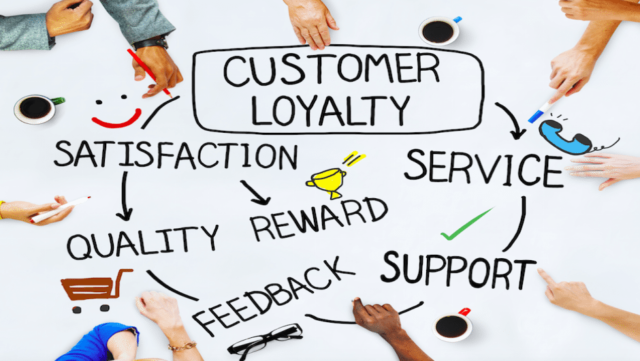In the competitive world of e-commerce, retaining customers is just as important as acquiring new ones. One of the most effective strategies for achieving customer retention is through loyalty programs. These programs not only encourage repeat purchases but also enhance customer satisfaction and engagement. In this blog post, we’ll explore how to create e-commerce loyalty programs that effectively retain customers and foster long-term relationships.

Table of Contents
Toggle1. Define Your Program Goals
Identify Key Objectives
Before launching a loyalty program, clearly define your goals. Consider what you want to achieve with the program, such as increasing repeat purchases, boosting customer lifetime value, or enhancing brand loyalty. Having specific objectives will guide your program’s design and measurement of success.
Understand Your Audience
Conduct research to understand your customer demographics, preferences, and buying behaviors. Tailoring your loyalty program to meet the needs and interests of your target audience will increase its effectiveness.
2. Choose the Right Type of Loyalty Program
Points-Based System
A points-based system allows customers to earn points for every purchase, which can be redeemed for discounts, free products, or exclusive offers. This straightforward approach incentivizes customers to make repeat purchases to accumulate points.
Tiered Programs
Tiered loyalty programs reward customers based on their spending levels. By creating different levels of membership (e.g., silver, gold, platinum), you encourage customers to spend more to unlock additional benefits and exclusive perks.
Referral Programs
Encourage existing customers to refer friends and family by offering rewards for successful referrals. This not only retains current customers but also helps you acquire new ones through trusted recommendations.
Subscription Models
Consider implementing a subscription-based loyalty program that offers exclusive benefits, discounts, or free shipping in exchange for a recurring fee. This model can provide a steady revenue stream while enhancing customer loyalty.
3. Offer Valuable Rewards
Relevant Incentives
Choose rewards that are meaningful to your customers. This could include discounts, free shipping, exclusive products, early access to sales, or personalized offers. The more valuable the rewards, the more likely customers will engage with the program.
Non-Monetary Rewards
Consider incorporating non-monetary rewards, such as recognition, badges, or exclusive experiences (e.g., access to events or behind-the-scenes content). These can enhance the emotional connection customers have with your brand.
4. Simplify Enrollment and Participation
Easy Sign-Up Process
Make it easy for customers to join your loyalty program. Offer a simple sign-up process that can be completed in just a few clicks. Consider integrating the enrollment option during the checkout process to capture more participants.
Clear Communication
Clearly communicate the program details, including how customers can earn rewards, the types of rewards available, and the program’s terms and conditions. Transparency builds trust and encourages participation.
5. Personalize the Experience
Segment Your Audience
Utilize customer data to segment your audience based on their preferences, purchase history, and behavior. This allows you to tailor rewards and communications to each segment, enhancing the relevance of your loyalty program.
Personalized Offers
Leverage customer data to deliver personalized offers and recommendations. For example, if a customer frequently purchases a specific product, consider offering them a discount on related items or an exclusive deal on their favorite products.
6. Create Engaging Communication Strategies
Regular Updates
Keep customers informed about their points, rewards, and program updates through regular communication. Use email newsletters, push notifications, or SMS to remind them of their progress and encourage them to engage with the program.
Gamification Elements
Incorporate gamification elements, such as challenges or competitions, to make the loyalty program more engaging. For example, you could offer bonus points for completing specific tasks or reaching milestones.
7. Measure Success and Iterate
Track Key Metrics
Regularly monitor key performance metrics to evaluate the success of your loyalty program. Metrics to track include customer retention rates, repeat purchase frequency, average order value, and overall program participation.
Gather Feedback
Solicit feedback from customers regarding their experiences with the loyalty program. Use surveys, reviews, or direct communication to gather insights and identify areas for improvement.
Adjust and Improve
Based on the data and feedback collected, make necessary adjustments to your loyalty program. Continuous improvement will ensure that the program remains relevant and appealing to customers.
8. Promote Your Loyalty Program
Highlight Benefits
Promote your loyalty program across your website, social media channels, and email marketing campaigns. Highlight the benefits and rewards to generate interest and encourage sign-ups.
Leverage Influencers
Consider collaborating with influencers or brand ambassadors to promote your loyalty program. Their endorsement can help increase visibility and credibility, attracting more participants.
Conclusion
Creating an effective e-commerce loyalty program requires careful planning, understanding your audience, and offering valuable rewards that encourage repeat purchases. By personalizing the experience, simplifying enrollment, and promoting engagement, you can foster long-term customer loyalty and drive sustainable growth for your e-commerce business. Remember to continually measure and refine your program based on customer feedback and performance data to ensure its ongoing success. With the right loyalty program in place, you can turn one-time buyers into loyal advocates for your brand.


No responses yet